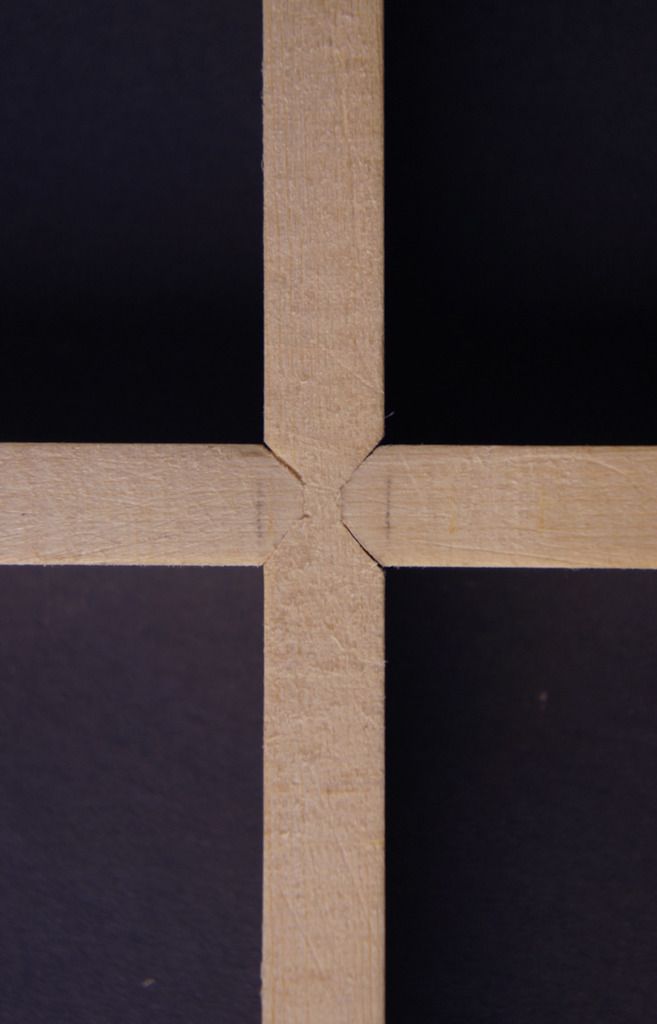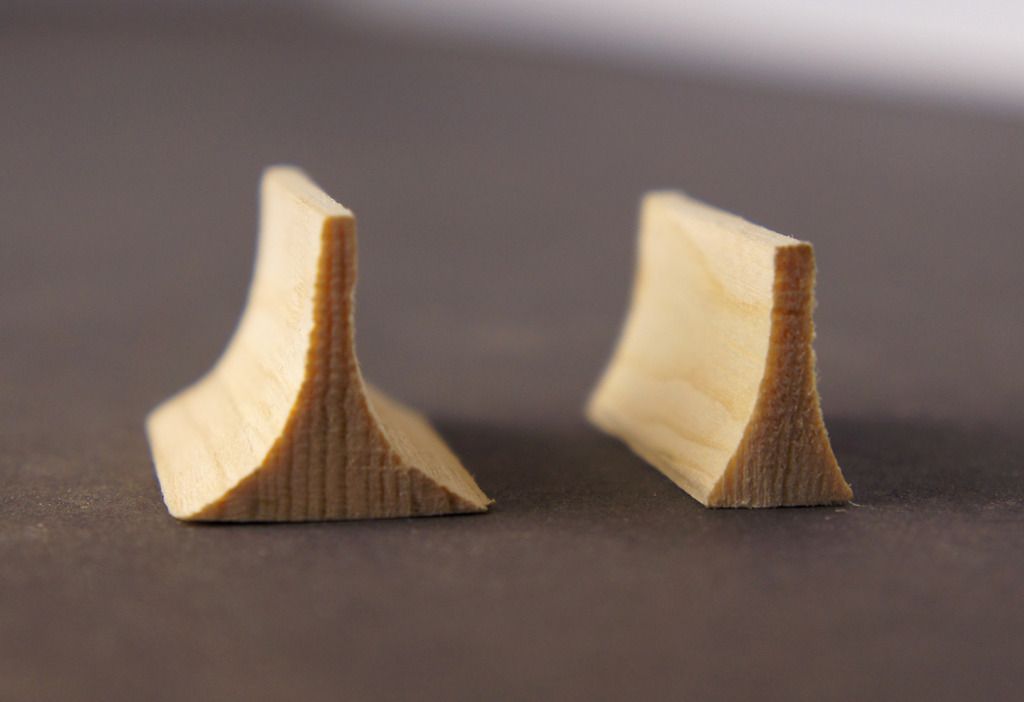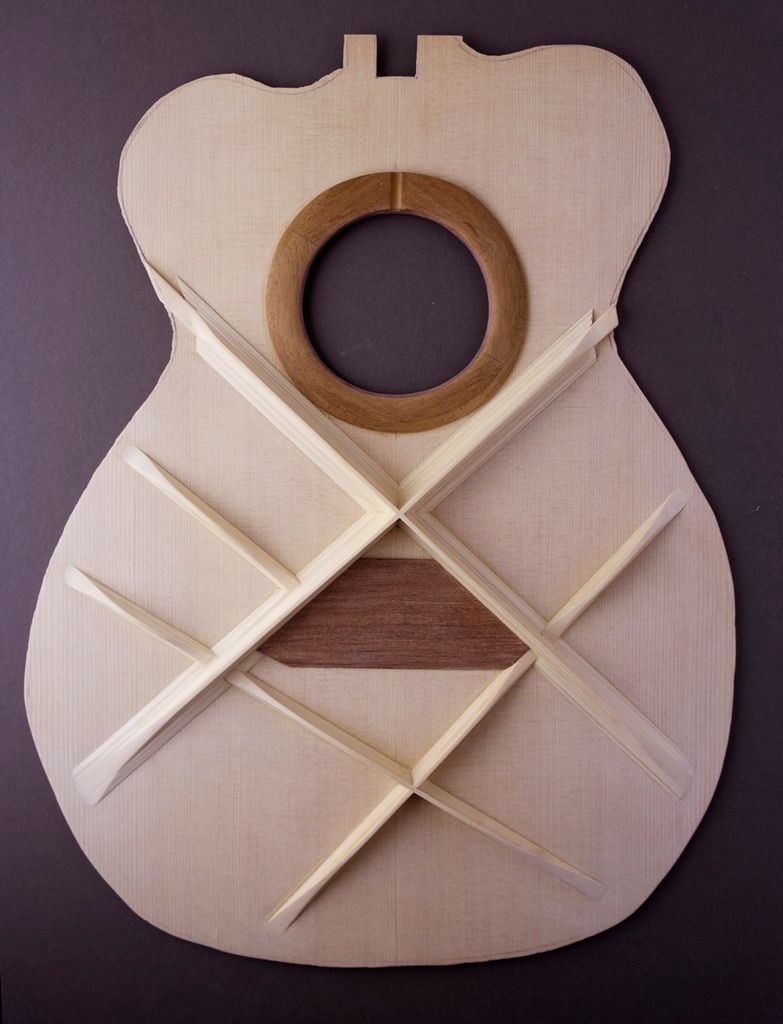
 |
|
#1
|
|||
|
|||
|
I tried building my first guitar almost 50 years ago. Since then I've given an awful lot of thought to what makes these instruments so magical. Of course one of the first things to capture my imagination was the top bracing. Early on I decided I wanted rather thin and tall bracing to maximize the stiffness, but I also needed enough width for a good gluing surface. This led me to making a cove profile to reduce weight. I tried a few different methods and had settled on a laborious hand carving and sanding method, after the braces were glued...then I saw Mark Hatcher's use of the half-lap miter that is so common in sash work. Not only was the joint work beautiful it in own rights, it was the "correct" way to make the lap joint in my eyes. That is the mark of a true artist-- making you see what you've thought all along. Thank you Mark!
  After noticing some brace print-through on a particularly thin topped guitar I built years ago, I started thinking about making the brace wider at the glue joint. This led me to thinking about acoustic impedance matching. Acoustic impedance matching can be seen in several common phenomenon. One is the ultrasound sonogram. The COLD! gel they use provides an impedance match with the transducer and your skin so that an image can be visualized with sound. Another example is the horn, that allows a smooth transfer from a small bore to the outside air.  It occurred to me that the thin transition from soundboard to brace would act as an impedance match rather than a mismatch. What effect might a mismatch have? It would cause waves to hit the incongruity and reflect back. I can think of one example of an obvious impedance mismatch in a "soundboard". This effect can be seen in the steel pan (or steel drum.) In the steel pan they crimp areas on the metal surface to delineate separate notes, effectively creating an impedance mismatch; not something you'd want on a guitar soundboard (unless you were after a Caribbean flair to your "riddams")  Since this guitar is sort of my concept workshop, I thought I would incorporate these impedance matched braces, and see what happens. WOW does it add stiffness! So much so, that I had to reduce the height of my bracing much more than usual to loosen up the top. The tap is very musical. You can also see the asymmetrical bracing that I've been using for a while, and the impedance matched soundhole ring that eases the transition from the air in the box to the outside air. |